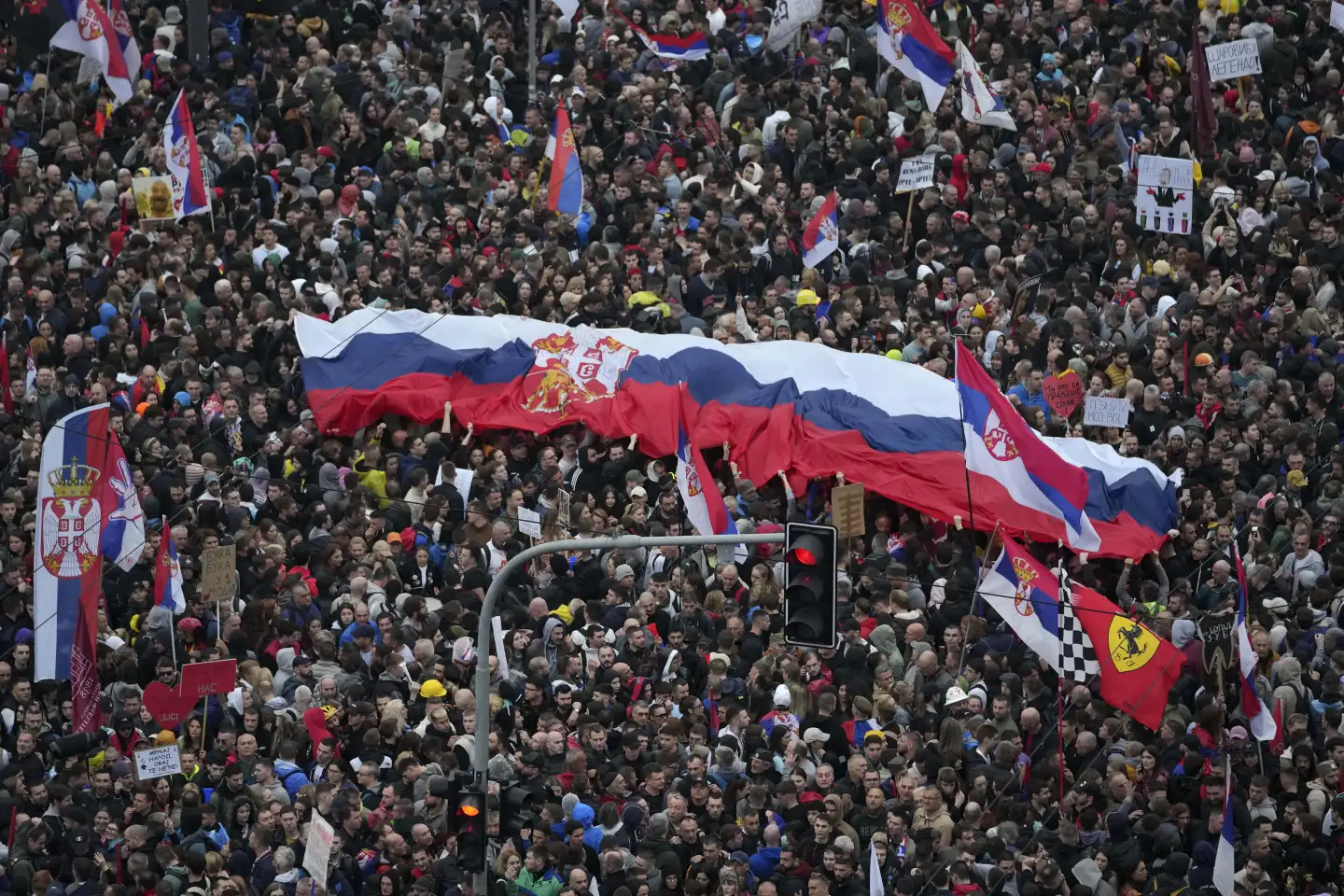A Familiar Tragedy, Now in Repetition
Serbian politics has always had a flair for the dramatic. From power struggles and corruption scandals to mass protests and questionable election results, Serbia’s political theater rarely disappoints. However, the recent resignation of the Serbian government is making headlines, both domestically and internationally, raising the question: Is this a genuine political upheaval, or just another act in the long-running saga of Balkan political instability?
While mainstream media will focus on the usual talking points—political maneuvering, external pressures, and economic instability—this article takes a deeper, more cynical dive into the events. We will analyze the roots of the crisis, the performative nature of political resignations in Serbia, and, most importantly, what (if anything) this actually means for the people. Because, let’s be honest, we’ve seen this movie before.
1. The Political Fallout: A Nation in Crisis or Business as Usual?
Serbia’s government, led by the ruling Serbian Progressive Party (SNS), has faced mounting public dissatisfaction. From accusations of corruption and election fraud to the government’s handling of EU accession negotiations, tensions have been bubbling for years. The tipping point, however, appears to be the latest political crisis, leading to the resignation of Prime Minister Ana Brnabić and her cabinet.
What Triggered the Resignation?
To understand why the government stepped down, let’s break down the key events:
- Public Discontent Reaches a Boiling Point: Large-scale protests over government corruption, election irregularities, and authoritarian tendencies have rocked the country.
- The Shadow of Aleksandar Vučić: Serbia’s president remains the true power figure, and many suspect this resignation is merely a strategic move rather than an actual shift in governance.
- International Pressure: The EU and other Western bodies have scrutinized Serbia’s political landscape, pushing for reforms and transparency.
The resignation, therefore, appears more like a controlled political maneuver rather than an admission of failure. But let’s not be naive—Serbian politics doesn’t operate on democratic principles alone.
2. The Art of Manipulation: How the Government Plays the Public
One of the more fascinating aspects of Serbian politics is how effectively those in power manipulate public perception. The recent resignation has been carefully framed as a “necessary reset” for the country, when in reality, it’s nothing more than a power consolidation strategy.
The Playbook of Serbian Political Strategy:
- The Illusion of Change: By resigning, the government gives the impression that they are listening to the public’s dissatisfaction. In reality, key players remain untouched.
- Media Propaganda: State-controlled media outlets are spinning the narrative to maintain government support, painting opposition figures as “radicals” and foreign influences as the root of Serbia’s problems.
- Dividing the Opposition: One of the greatest strengths of the ruling party has been its ability to fragment the opposition, ensuring that no true alternative emerges.
For the everyday citizen, this means one thing: Don’t expect any real change.
3. Cultural and Social Impact: What This Means for the People
While the political elite play their games, Serbian citizens are left to deal with the consequences. High unemployment, inflation, and brain drain continue to plague the country. But what does this latest resignation mean for the cultural and artistic communities?
The Artistic Response to Political Turmoil
Artists, writers, and musicians have historically been at the forefront of political dissent in Serbia. From the anti-Milošević protests of the 1990s to modern-day performances critiquing corruption, culture remains one of the strongest voices against the establishment.
- Satirical Art & Political Commentary: Expect an increase in satirical works criticizing the government’s lack of accountability.
- Street Art & Protest Music: Public art installations and protest songs will likely play a key role in mobilizing dissent.
- Film & Literature as Resistance: Filmmakers and authors will continue to document the struggles of ordinary Serbians, exposing government failures to a broader audience.
However, increased political turmoil often leads to censorship, as governments attempt to silence dissenting voices under the guise of maintaining stability. The next few months will reveal whether Serbia’s artistic community will have the space to freely express its frustrations.
4. Historical Parallels: Haven’t We Seen This Before?
Political resignations in Serbia are hardly new. In fact, they follow a recognizable pattern that should make any seasoned observer skeptical.
A Brief History of Political Resignations in Serbia:
- 2000 – The Fall of Slobodan Milošević: After years of authoritarian rule, massive protests and international pressure led to his resignation. However, remnants of his political machinery still influence modern Serbian politics.
- 2012 – Boris Tadić’s Exit: The former president resigned in an attempt to reposition himself for re-election, proving that Serbian leaders often use resignation as a strategic tool rather than an admission of defeat.
- 2017 – Vučić’s Reshuffling: When Aleksandar Vučić stepped down as Prime Minister to become President, he ensured that his influence remained intact.
In each case, the “resignation” was more of a calculated chess move than a true shift in power. The latest resignation is likely no different.
5. What Happens Next? Predicting the Future of Serbian Politics
Given the patterns we’ve explored, it’s safe to assume that the resignation will lead to one of the following scenarios:
Likely Outcomes:
- A New Prime Minister, Same Agenda: A government reshuffle that keeps the same policies and key players in power, allowing the ruling party to maintain its grip while pacifying public outrage.
- Early Elections, Carefully Managed: Elections may be called, but with the ruling party’s control over media and institutions, the results may already be decided.
- Increased Opposition Pressure: If opposition parties can finally unify, this could be a turning point. But given the history of political fragmentation, this remains uncertain.
Conclusion: The More Things Change, the More They Stay the Same
For the average Serbian citizen, this resignation likely means very little in practical terms. The political elite will continue to operate as they always have—through strategic resignations, media manipulation, and power consolidation. Meanwhile, ordinary people will continue to struggle with economic hardships, and the artistic community will either rise in resistance or face increasing suppression.
So, is this resignation the dawn of a new political era in Serbia? Highly unlikely. But if history has taught us anything, it’s that Serbian resilience—especially through art, culture, and activism—will always find a way to challenge the status quo.









